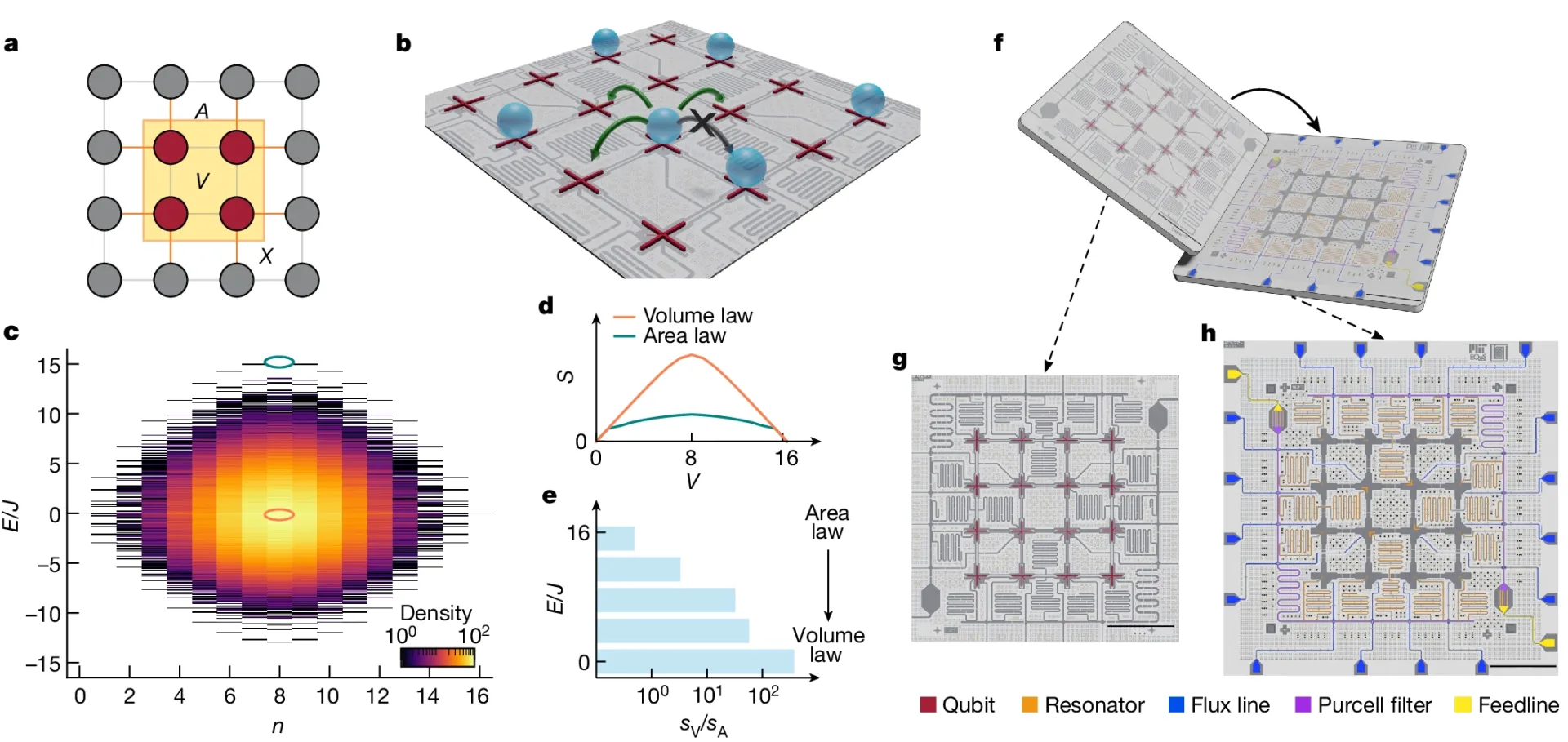MIT researchers have developed a technique to efficiently generate entanglement among an array of superconducting qubits, a fundamental resource for quantum computing. The team, led by Amir H. Karamlou and William D. Oliver, used microwave technology to control a quantum processor composed of superconducting circuits. This allowed them to generate highly entangled states and shift those states from one type of entanglement to another. The research, which could deepen understanding of how information is stored and processed in quantum systems, was published in Nature.
Understanding Quantum Entanglement
Quantum entanglement, a unique correlation between quantum objects such as atomic particles, is a phenomenon that cannot be explained by classical physics. It is, however, a fundamental property that governs the macroscopic behavior of quantum systems. Understanding quantum entanglement is crucial as it is central to how quantum systems function, particularly in the storage and processing of information.
Quantum bits, or qubits, are the fundamental units of a quantum computer. Creating specific entangled states in many-qubit systems is a challenging task, as is distinguishing between different types of entangled states. However, researchers at MIT have now developed a technique to efficiently generate entanglement among an array of superconducting qubits that exhibit a specific type of behavior.
The Role of Superconducting Qubits
The Engineering Quantum Systems (EQuS) group at MIT has been developing techniques using microwave technology to precisely control a quantum processor composed of superconducting circuits. The methods introduced in this work enable the processor to efficiently generate highly entangled states and shift those states from one type of entanglement to another. This includes shifting between types of entanglement that are more likely to support quantum speed-up and those that are not.
The researchers view the emerging quantum processors as tools to further our understanding of physics. While the scale of the experiment can still be simulated on a classical computer, the researchers believe they have a good roadmap for scaling this technology and methodology beyond the reach of classical computing.
Categorizing Quantum Entanglement
In a large quantum system comprising many interconnected qubits, entanglement can be thought of as the amount of quantum information shared between a given subsystem of qubits and the rest of the larger system. This entanglement can be categorized as area-law or volume-law, based on how this shared information scales with the geometry of subsystems.
Volume-law entanglement, where the amount of entanglement grows proportionally with the total size of the subsystem, is believed to be a key ingredient in realizing a quantum advantage. However, it is more complex than area-law entanglement and practically prohibitive at scale to simulate using a classical computer.
Quantum Processor and Control Protocol
The researchers created a quantum processor and control protocol that enable them to efficiently generate and probe both types of entanglement. Their processor comprises superconducting circuits, which are used to engineer artificial atoms. These artificial atoms are utilized as qubits, which can be controlled and read out with high accuracy using microwave signals.
The device used for this experiment contained 16 qubits, arranged in a two-dimensional grid. The researchers carefully tuned the processor so all 16 qubits have the same transition frequency. Then, they applied an additional microwave drive to all of the qubits simultaneously.
Future Implications
This method can be used to determine whether the entanglement in a generic quantum processor is area-law or volume-law. In the future, scientists could utilize this technique to study the thermodynamic behavior of complex quantum systems, which is too complex to be studied using current analytical methods and practically prohibitive to simulate on even the world’s most powerful supercomputers.
The experiments conducted in this work can be used to characterize or benchmark larger-scale quantum systems, and may also provide further insights into the nature of entanglement in these many-body systems. This research is a significant step forward in the field of quantum computing and could have far-reaching implications for the future of technology and our understanding of the quantum world.
External Link: Click Here For More

